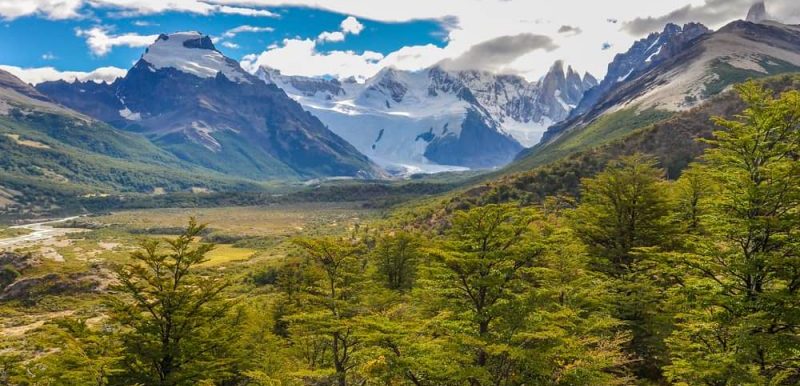It is called biodiversity to the variety of life forms that develop in a natural environment. All plants, animals, microorganisms, as well as the genetic material of each of them are included in the definition.
Both the species that inhabit the region and the ecological function that each one fulfills, which in some way allows the existence of all the others, are important.
The most important value of biodiversity is in the fact that it is a process initiated by a variety of species over a large number of years, the time required to achieve something like the equilibrium of the biosphere.
The survival of the species is ensured by the biological system in which they are found, and in this plane man is only one more species: the use and benefit of biodiversity has contributed in many ways to the development of human culture.

Biological systems
The biological systems They tend to have their own dynamics, insofar as the species fulfill functions but are also becoming extinct, so that a naturally extinct species causes a disturbance in the ecosystem that can be replaced by another species.
However, different actions carried out by man tend to modify the biological Diversity From different angles: alterations in climatic conditions, the persecution and overexploitation of species, the destruction and fragmentation of habitats, the introduction of invasive species and intensive agriculture are harmful to some of the Earth’s species.
Importance of biodiversity
When the loss of diversity It is caused by the manipulation by man of natural systems, this recomposition is not done automatically and can endanger the entire ecological system.
That is why there are permanently campaigns to favor the care of biodiversity, and the preservation of ecosystems. For this, a series of actions are recommended:
- Integrate economic development with the preservation of the environment.
- Related to the latter, abandon production techniques that degrade living resources or the soil.
- Assess the importance of each component of biological diversity, in addition to the system in general.
- Caring for native forests, from individual behaviors but also with public policies.
- Map and monitor the environments, as well as their populations of flora and fauna.
- Avoid the introduction of exotic species unless they are especially beneficial.
Indicators and examples

Different indicators are used to measure biodiversity: The Simpson index is one of the most frequent. According to these indicators, a classification has been generated that contains seventeen countries called megadiverse, which together are home to more than 70% of the planet’s biodiversity.
Here is the list, including some elements of the biodiversity of each of them:
- U.S. The vast area of the country is home to 432 species of mammals, 311 of reptiles, 256 of amphibians, 800 of birds, 1,154 of fish and more than 100,000 insects.
- India. The fauna includes cows, buffaloes, goats, lions, leopards and Asian elephants. There are 25 wetlands in the country and it has endemic species such as the Nilgiri monkey, the Beddome toad, the Bengal tiger and the Asiatic lion.
- Malaysia. There are around 210 species of mammals in the country, 620 species of birds, 250 species of reptiles (150 of them are snakes), 600 species of coral and 1200 species of fish.
- South Africa. With the third biodiversity in the world, it includes 20,000 different types of plants, and 10% of the known species of birds and fish in the world.
- Mexico. It has 37 ‘wild areas’ on the planet, with a great diversity of birds and fish (875 species, 580 of seabirds and 35 of marine mammals).
- Australia. With 8% of its protected area, the country has the kangaroo and the koala as endemic species, but also includes platypus, possum and Tasmanian devils. There is a great variety of trees, usually eucalyptus and acacias.
- Colombia. It is the richest country in birds with 1870 species, in addition to including more than 700 species of frogs, 456 species of mammals, and more than 55,000 species of plants (a third of them only inhabit that country).
- China. It has more than 30,000 advanced plants, and 6,347 vertebrates that represent between 10% of the plants and 14% of the animals in the world.
- Peru. There are about 25,000 species, of which 30% are endemic. There are about 182 species of domesticated Andean plants.
- Ecuador. There are between 22,000 and 25,000 species of plants, with a high rate of endemics. In addition, there are a large number of mammals, birds, amphibians, and reptiles.
- Madagascar. It includes 32 species of primates unique in the world, 28 species of bats, 198 species of birds and 257 species of reptiles.
- Brazil. It is the most biodiverse country in the world, with the largest number of mammals and more than 3,000 freshwater fish, 517 species of amphibians, 3,150 species of butterflies, 1,622 types of birds and 468 types of reptiles.
- Democratic Republic of Congo. Large mammals such as elephants, lions, leopards, chimpanzees or giraffes stand out.
- Indonesia. In the so-called ‘Forests of Paradise’ there are a large number of species, including 500 mammals and 1600 birds.
- Venezuela. There are about 15,500 species of plants, as well as a large number of animals, including 1,200 species of fish.
- Philippines. Characterized by a large number of reptiles and amphibians.
- Papua New Guinea. About 4,642 species of vertebrates live in the rainforest of New Guinea.
